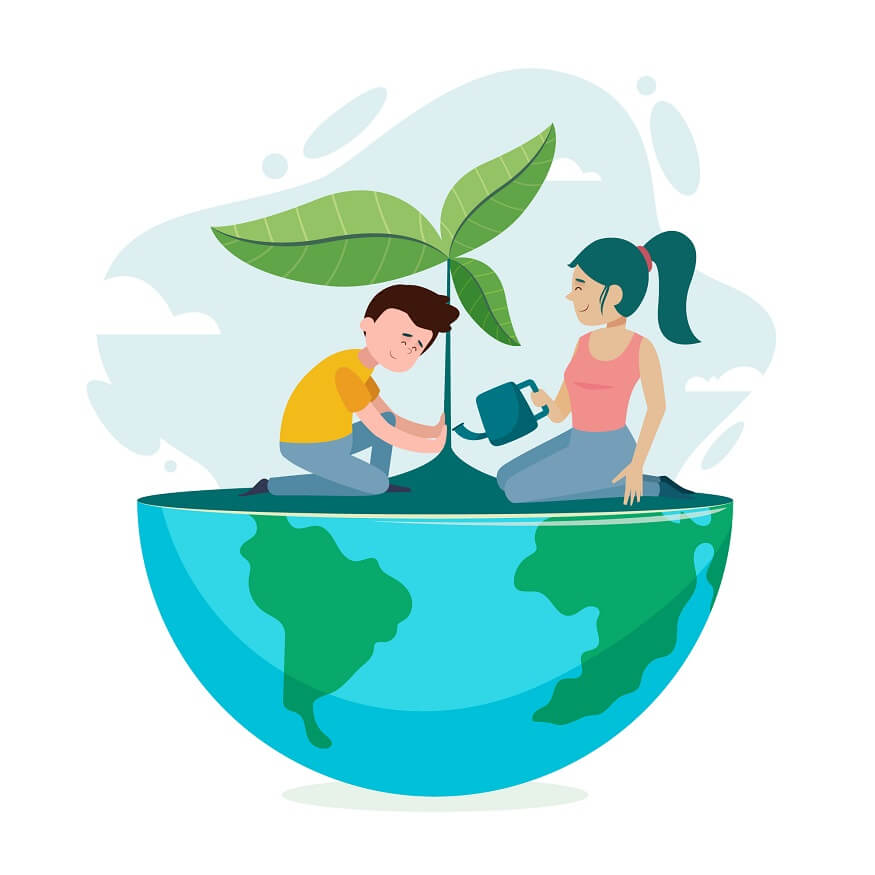Why Environmental Education Matters: A Comprehensive Guide

Try to think about a world where everything we do has a ripple effect on nature—the air we breathe, the water we use, and the places we call home. Our daily choices, big or small, can shape the health of the environment. That’s where the need for environmental education steps in.
Environmental education is a powerful tool for creating a sustainable and harmonious relationship between humans and the environment. It encourages us to explore nature, ask questions, and discover the wonders of the world around us.
Early exposure of students to environmental learning creates a foundation for a lifelong connection with the planet. Integrating environmental education and its importance into the curriculum gives students the knowledge to make informed decisions about their impact on their surroundings.
What Is Environmental Education and Its Importance
Environmental education is all about learning how to care for our planet. It’s not just memorizing facts about nature but understanding the challenges our environment faces and what we can do to help.
It involves learning about the relationships between living organisms and their surroundings and the impact of human activities on the natural world. The importance of environmental education is essential today, where issues like climate change, pollution, and biodiversity loss are pressing concerns.
From understanding the need for recycling to appreciating the value of green spaces, environmental education helps us embrace practices that minimize our ecological footprint. It promotes a deeper understanding of the Earth’s ecosystems and empowers students to contribute positively to the well-being of the planet.
Benefits of Environmental Education
Environmental education offers numerous benefits for students. It creates a deeper understanding of ecological systems, promotes sustainable behaviors, and encourages a sense of responsibility towards the Earth. Here are some key benefits:
- Increased Environmental Awareness:
- Connection to Nature:
- Critical Thinking Skills:
- Sustainable Behavior Adoption:
- Empowerment:
- Citizenship and Civic Engagement:
- Health and Well-being:
- Career Opportunities:
- Appreciation for Biodiversity:
- Ethical Considerations:
- Global Perspective:
Environmental education helps students learn more about the threats faced by nature, like deforestation and the depletion of essential resources.
Engaging in outdoor activities and learning experiences builds a stronger connection between students and the natural world. This promotes appreciation and love for the environment.
Environmental education encourages students to think critically about complex environmental challenges and develop problem-solving skills to address real-world issues.
Exposure to sustainable practices and concepts helps students adopt eco-friendly behaviors in their daily lives, such as reducing waste, conserving energy, and making environmentally conscious choices.
Understanding the impact of individual and collective actions on the environment empowers students to contribute positively to environmental conservation efforts and advocate for sustainable practices.
Environmental education encourages students to participate in community initiatives, discuss environmental policies, and participate in environmental stewardship.
Spending time in nature and adopting eco-friendly practices can positively affect students’ physical and mental well-being by reducing stress and promoting a healthier lifestyle.
Exposure to environmental education can inspire students to pursue careers in environmental science, conservation, sustainability, and related fields, contributing to the growth of a green workforce.
Learning about ecosystems, wildlife, and biodiversity sparks great appreciation for the balance of nature. Students start to realize the importance of preserving diverse plant and animal species.
Environmental education talks about the ethical considerations of using natural resources. This prompts students to think about the consequences of their actions on the environment and future generations.
Environmental education helps students understand the interconnectedness of global ecosystems and the importance of addressing environmental challenges locally and globally.
Types of Environmental Education: How to Familiarize Students with Nature
Various approaches to environmental education can make learning accessible and engaging for all students. Here are some of the types of environmental education that cater to different learning styles:
Adding environmental education into the regular curriculum ensures students encounter environmental concepts through lectures, presentations, or class discussions.
Trips to natural settings, such as parks, forests, or wildlife reserves, can provide hands-on experiences and direct contact with nature.
Guided walks through natural environments, led by educators, allow students to observe and learn about local flora and fauna.
Conducting lessons and activities in outdoor settings, such as school gardens or outdoor learning spaces, enhances the connection between students and their environment.
Interactive workshops can cover topics like recycling, water conservation, and renewable energy, providing students with practical knowledge and skills.
Involving students in citizen science initiatives encourages them to actively contribute to research and data collection related to environmental issues.
Engaging students in hands-on projects, like creating a school garden, participating in clean-up events, or implementing waste reduction initiatives, can help them understand nature better.
Inviting experts, scientists, or environmental activists to speak to students can provide valuable insights and inspiration.
Screening documentaries or films related to environmental issues can raise awareness and start discussions among students.
Interactive simulations and educational games can make learning about complex environmental concepts enjoyable and engaging.
Forming student-led environmental clubs encourages collaboration and provides a platform for initiatives like tree planting, recycling drives, and awareness campaigns.
Assigning art projects, such as creating nature-inspired artwork or writing eco-themed poems, helps students express their connection to the environment.
Implementing sustainable practices within schools, such as energy conservation and waste reduction, teaches students about the importance of sustainable living.
Utilizing online platforms and resources for virtual field trips, webinars, and interactive modules can enhance accessibility in delivering environmental education.
Teaching kids about the environment earlier on can help the lessons stick. Parents and schools should work together to promote green habits from a young age. At Billabong International High School, we understand the importance of teaching environmental education. We want our students to care about the environment, understand its challenges, and be part of the solution. If you want to learn more about our curriculum, contact us today!













